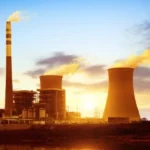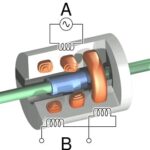Fire extinguishers are critical tools in fire safety, designed to control or extinguish small fires in emergency situations. The device is portable as well as easy to keep. For putting of the small fires, these machines are essential options. To save life and property, it is a very important option. Now wonder than most of the buildings, offices and medical centers keep these extinguishers for a quick response to fire issues. Here in this article we will be exploring both the advantages and disadvantages of fire extinguishers, something that you would need to know before using them in your hour of need.

Advantages of Fire Extinguishers:
1. Immediate Response:
Fire safety requires fire extinguishers, which respond quickly. This discussion will emphasize fire extinguishers, particularly in early fire emergencies. Remember that fire extinguishers may limit fire damage and enhance results with their early reaction. Fire extinguishers are essential early in a fire. These crucial moments may make or destroy a scenario. A fire extinguisher may rescue small fires. Learning fire extinguisher usage may save lives and property.
2. Portability:
Situations need portable fire extinguishers. This research will explore how mobile fire extinguishers improve building safety. Rapid firefighting equipment availability may be crucial. Lightweight and portable, these gadgets are suited for all sizes and abilities. Portability helps fire safety agents respond quickly.
3. Versatility:
The adaptability of fire extinguishers, a crucial part of fire safety, is due to their careful design for certain fire types. This variety of fire extinguishers shows how precise and efficient fire suppression is. We shall explore fire extinguisher categories and their importance in responding to different fire risks in the next section. Fire extinguishers are classified by the flames they suppress. This categorization approach is crucial since flames have varied fuels and problems. Different kinds of fire extinguishers target distinct fire sources to overcome these issues.
4. Minimal Damage:
Fire safety relies on fire extinguishers’ precision. Careful use may decrease fire damage and alter crises. We’ll examine fire extinguishers’ groundbreaking role in avoiding fires and reducing firefighting risk. Fire extinguishers’ early fire-stopping ability is key to their effectiveness. When a fire is small, controlled, and fueled by a little quantity of combustible material, an extinguisher may change the game. It allows people put out fires before they spread. You can choose the correct fire extinguisher to reduce damage. Different fire extinguishers fight different flames. Class A fire extinguishers fight wood, paper, and fabric fires. It extinguishes flames with water or foam when applied appropriately.
5. User-Friendly:
Fire extinguishers are unusual in their simplicity of use as firefighting equipment. Most of these devices include clear instructions on their exteriors for ease of operation. Due to its simplicity and minimal training requirements, many individuals can operate fire extinguishers. This subject covers household and commercial fire extinguisher accessibility. Fire extinguishers are desirable because of their simplicity. When using “PASS,” pull, aim, squeeze, and sweep. Avoid accidental discharge by removing the safety pin or tamper seal. This preps the extinguisher.
Fire extinguishers work using these four simple steps, usually displayed on them. This straightforward technique lets individuals respond swiftly and confidently to fire situations. Lightweight, portable fire extinguishers are easy to use. Most extinguishers are tiny and light enough for most people to wield. Home, office, school, and public facilities need this accessibility to respond quickly to fires.
Disadvantages of Fire Extinguishers
1. Limited Capacity:
Fire extinguishers are essential, yet their extinguishing agent capacity is limited. When the extinguishing chemical runs out, the gadget is worthless and needs professional aid to refill. This restriction necessitates extensive understanding of their function and relevance for varied firefighting scenarios, particularly long-term operations. Limited capacity distinguishes fire extinguishers from other firefighting equipment. These devices extinguish flames by releasing a certain quantity of chemical. This design makes them portable and deployable but restricts firefighting.
A fire extinguisher gets empty after discharge, prohibiting further suppression without replenishment. Unlike water hoses, fire extinguishers have limited extinguishing medium. Fire extinguisher refills are difficult for most people. Professionals should handle it since it requires experience, equipment, and materials. This competent operation refills the extinguisher correctly, maintaining its reliability.
2. Risk of Harm:
Like any instrument, fire extinguishers may be harmful if misused. Proper usage is safe, but inexperienced users may be hurt. This talk will discuss these issues and stress careful handling to prevent injury. Fire extinguishers must be used safely. Properly utilized fire extinguishers reduce damage and save lives. Handling or abuse may cause minor to major injuries. Misdirected extinguisher discharge is a common problem. In a fire emergency, untrained users may struggle or discharge the gadget incorrectly. This may delay fire control, allowing flames to spread. Inhaling extinguisher chemicals is another risk in confined spaces or near humans. Inhaling dry chemical powders or extinguisher fumes may cause respiratory issues, airway irritation, or discomfort. These effects are typically temporary and non-life-threatening, but they underscore the need of using fire extinguishers in well-ventilated spaces.
3. Maintenance Requirements:
Fire prevention requires frequent extinguisher maintenance. Important equipment needs frequent maintenance, pressure checks, and refills to work. Neglecting these maintenance tasks might cause equipment failure when needed most. For crisis fire extinguisher effectiveness, we will maintain them.
Maintaining fire extinguishers demands knowledge that they are not “set and forget.” These fire safety components must always be available. Regular maintenance guarantees firefighter reliability. Fire extinguisher maintenance requires inspections. These monthly or annual visual inspections extensively examine the extinguisher. Damage, corrosion, and wear and tear may compromise extinguisher function. They also inspect the extinguisher’s safety button or tamper seal for accidental discharge.
4. Limited Range:
Extinguishers are important for fire protection but have a limited range. Fire extinguishers reach 5–20 feet, depending on kind and size. These devices function well near the fire. Fire may have spread beyond this radius or become too risky to approach. This session will explain fire extinguisher range constraints and why they may not work.
Extinguishers’ range influences their effectiveness. It restricts safe extinguisher discharge from the flames. This range balances accessibility and safety for quick action without flames. When considering fire emergency dynamics, this limitation is realistic. Fires develop swiftly, particularly early. A small fire may quickly spread if left untreated. People may neglect to extinguish flames beyond their reach. A distant fire extinguisher may evaporate before reaching the fire’s base, rendering it worthless.
5. Not Suitable for All Fires:
Fire safety items like extinguishers are specialized. These gadgets help battle small, controlled fires early. They cannot fight large, fast-spreading flames, electrical, or chemical fires. To put out these fires is risky and pointless. This presentation will discuss fire extinguisher limitations and the risks of inappropriate use in certain fires.
Conclusion
It is for sure that these fire extinguishers hold much importance when it comes to quick fire response. With a versatile options and high portability, these fire extinguishers are now most preferred safety options in most of the commercial and noncommercial areas. If one gets to know the pros and cons of the device, proper utility might be possible.

